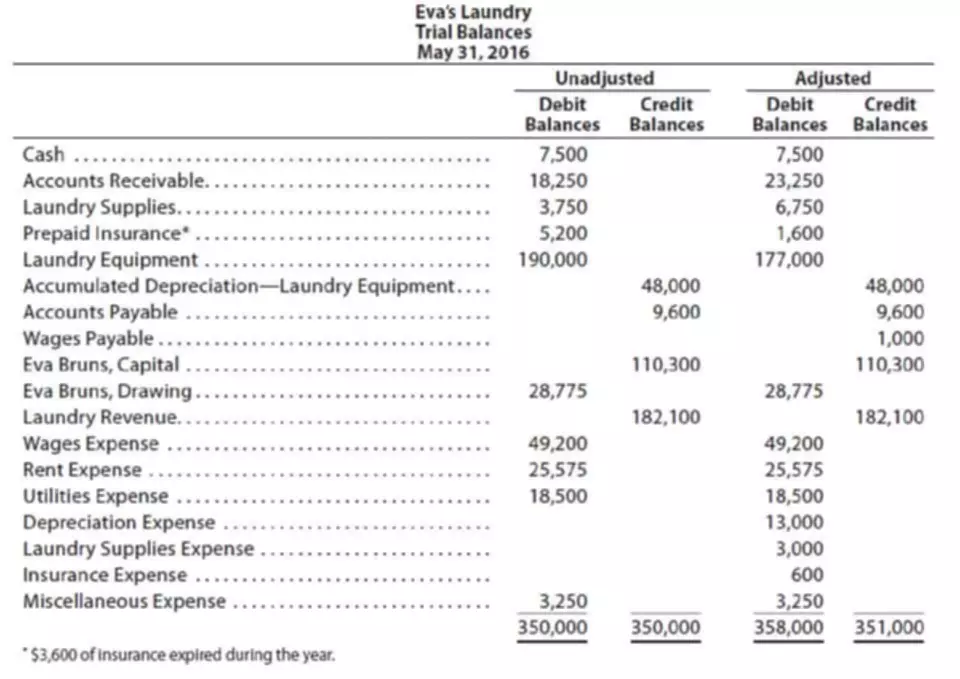What Is Working Capital? How to Calculate and Why It’s Important
Content

In reality, you want to compare ratios across different time periods of data to see if the net working capital ratio is rising or falling. You can also compare ratios to those of other businesses in the same industry. For most companies, working capital constantly fluctuates; the balance sheet captures a snapshot of its value on a specific date. Many factors can influence the amount of working capital, including big outgoing payments and seasonal fluctuations in sales.
- Working capital is the difference between a company’s current assets and current liabilities.
- This presentation makes it easier for investors and creditors to analyze a business.
- Working capital (as current assets) cannot be depreciated the way long-term, fixed assets are.
- Working capital ratios between 1.2 and 2.0 indicate a company is making effective use of its assets.
- If the calculated ratio is less than 1.0, then it implies that the company has to rely on other short-term resources, such as receivables and inventory.
A working capital ratio somewhere between 1.2 and 2.00 is generally considered good. So where does this ratio fit in and how can you use it to inform your decisions? In this article, we’ll explore what working capital ratio is, why it matters, how to calculate it, and what to do with this information. Working capital can only be expensed immediately as one-time costs to match the revenue they help generate in the period.
Current liabilities
If the company applies for a new loan, it will have to pay off some of its debt in order to improve its working capital ratio and lower its risk to creditors. Another reason for working capital ratio fluctuation is accounts receivable. If you’re struggling with late-paying clients or are forced to offer trade credit to stay competitive, your assets will take a dive until the cash is in the bank. As an entrepreneur, it matters to you almost daily because it’s a vital barometer of your company’s financial health. This ratio can also help you predict upcoming cash flow problems and even bankruptcy. The latter objective can be achieved by doing the same on the accounts payable side of operations.
It means the firm would have to dispose of all current assets before it can pay off its current liabilities. This is because these assets are easily convertible to cash, unlike fixed assets. The working capital ratio is a liquidity tool that gauges a company’s ability to settle its current debts with its current assets. Business owners, accountants, and investors all use working capital ratios to calculate the available working capital, or readily available financial assets of a business. It’s an important marker because it can be used to gauge the company’s ability to handle its short-term financial obligations such as payroll, debts, and other bills. Working capital ratio is a measurement that shows a business’s current assets as a proportion of its liabilities.
What Is the Net Working Capital Ratio?
This means that XYZ company can meet its current liabilities twice with its base of current assets. An exception to this is when negative working capital arises in businesses that generate cash very quickly and can sell products to their customers before paying their suppliers. Other current liabilities vary depending on your occupation, your industry, or government regulations. In addition to business licenses and permits, some practitioners require annual licensing or continuing education. For example, individual architects in all 50 states require licenses with regular renewals.
This indicates that the company is very liquid and financially sound in the short-term. If this company’s liabilities exceeded their assets, the working capital would be negative and therefore lack short-term liquidity for now. Conversely, a company with a negative working capital means the business lacks liquid assets to cover its current or short-term liabilities, usually due to poor asset management and cash flow. In case a company has insufficient cash to cover its bills when they are due, it will have to loan money, thereby increasing its short-term debt. It proves the company isn’t operating efficiently, meaning, it cannot settle its obligations properly.
Do Not Sell or Share My Personal Information
Current liabilities are all the debts and expenses the company expects to pay within a year or one business cycle, whichever is less. This typically includes the normal costs of running the business such as rent, utilities, materials and supplies; interest or principal payments on debt; accounts payable; accrued liabilities; and accrued income taxes. Companies can forecast what their working capital will look like in the future. By forecasting sales, manufacturing, and operations, a company can guess how each of those three elements will impact current assets and liabilities.
Fixed assets are not included in working capital because they are illiquid; that is, they cannot be easily converted to cash. Generally speaking, however, shouldering long-term negative working capital — always having more current liabilities working capital ratio than current assets — your business may simply not be lucrative. So, to achieve better valuation results, this metric should be used in conjunction with other liquidity assessment ratios like the sales to working capital ratio.
How to calculate working capital ratio
The current ratio, also known as the working capital ratio, provides a quick view of a company’s financial health. Working capital represents a company’s ability to pay its current liabilities with its current assets. This figure gives investors an indication of the company’s short-term financial health, capacity to clear its debts within a year, and operational efficiency. For example, if a company’s balance sheet has 300,000 total current assets and 200,000 total current liabilities, the company’s working capital is 100,000 (assets – liabilities). The working capital ratio, also known as the current ratio, is a measure of the company’s ability to meet short-term obligations.

This calculation gives you a firm understanding what percentage a firm’s current assets are of its current liabilities. Non-cash working capital (NCWC) is the difference between current assets excluding cash and current liabilities. This means that for every $1 in current liabilities you have, you have $1.32 in current assets available to pay them off. Products that are bought from suppliers are immediately sold to customers before the company has to pay the vendor or supplier. In contrast, capital-intensive companies that manufacture heavy equipment and machinery usually can’t raise cash quickly, as they sell their products on a long-term payment basis.
Operating Working Capital Formula
It’s a metric that provides an overview of financial health and liquidity, indicating whether current liabilities can be paid by existing assets. Also, it does not compare the timing of when current assets are to be liquidated to the timing of when current liabilities must be paid off. Thus, a positive net working capital ratio could be generated in a situation where there is not sufficient immediate liquidity in current assets to pay off the immediate requirements of current liabilities. The working capital ratio is a measure of liquidity, revealing whether a business can pay its obligations.
